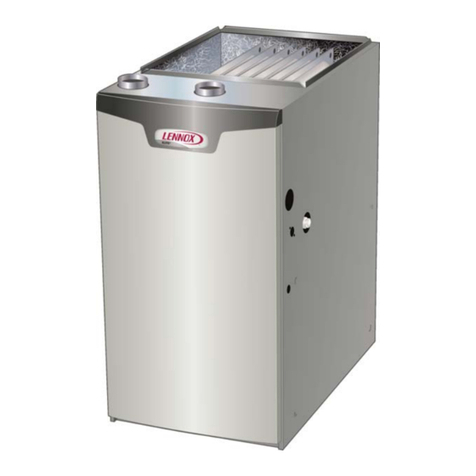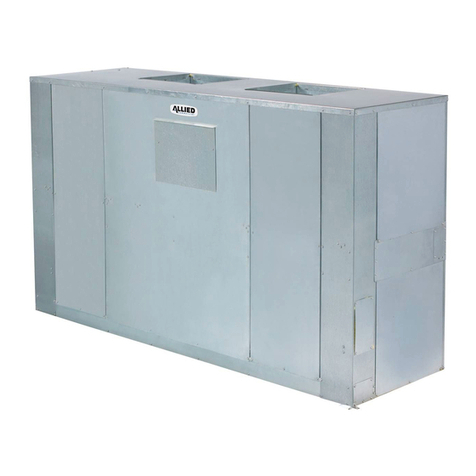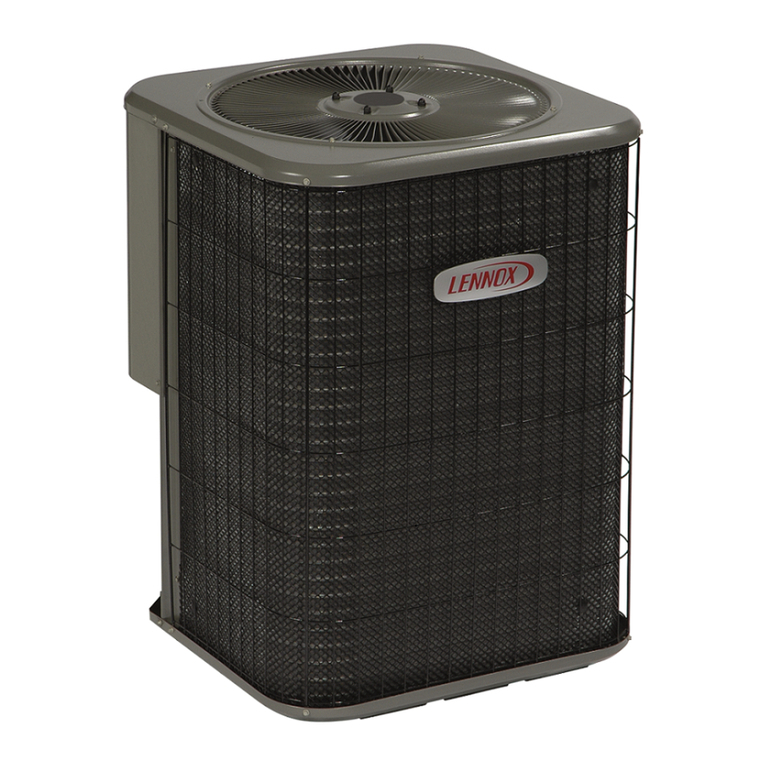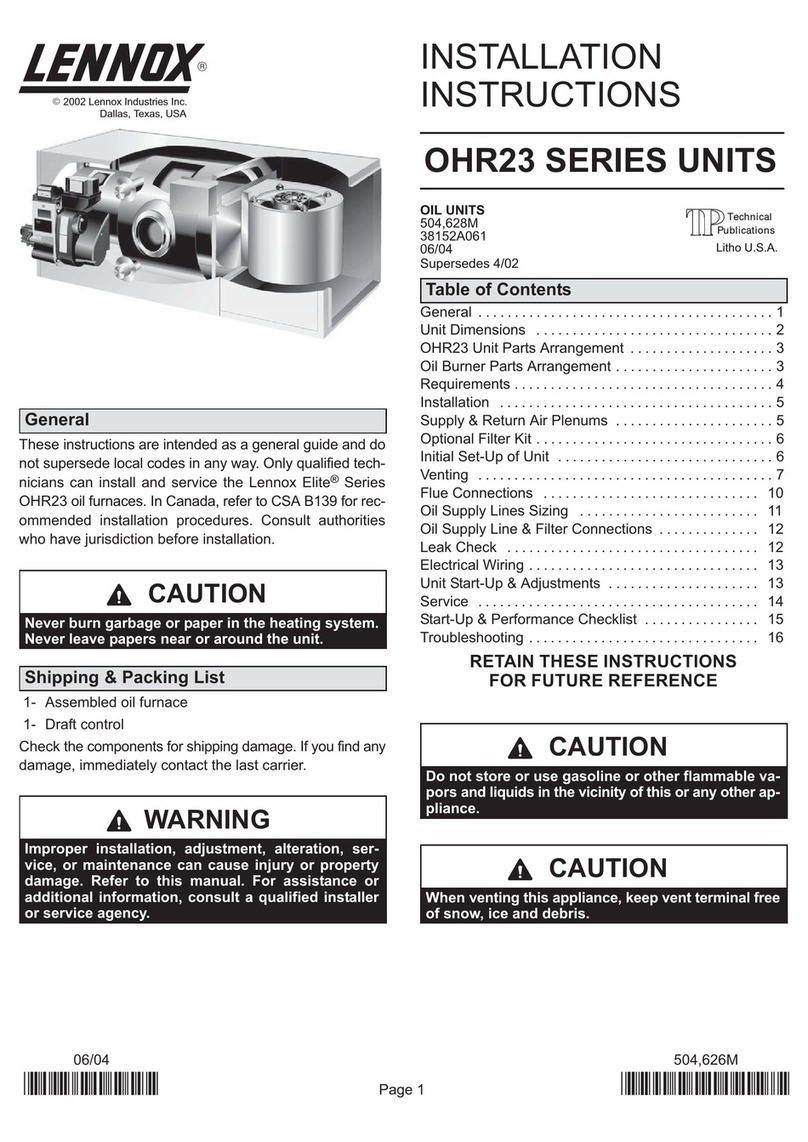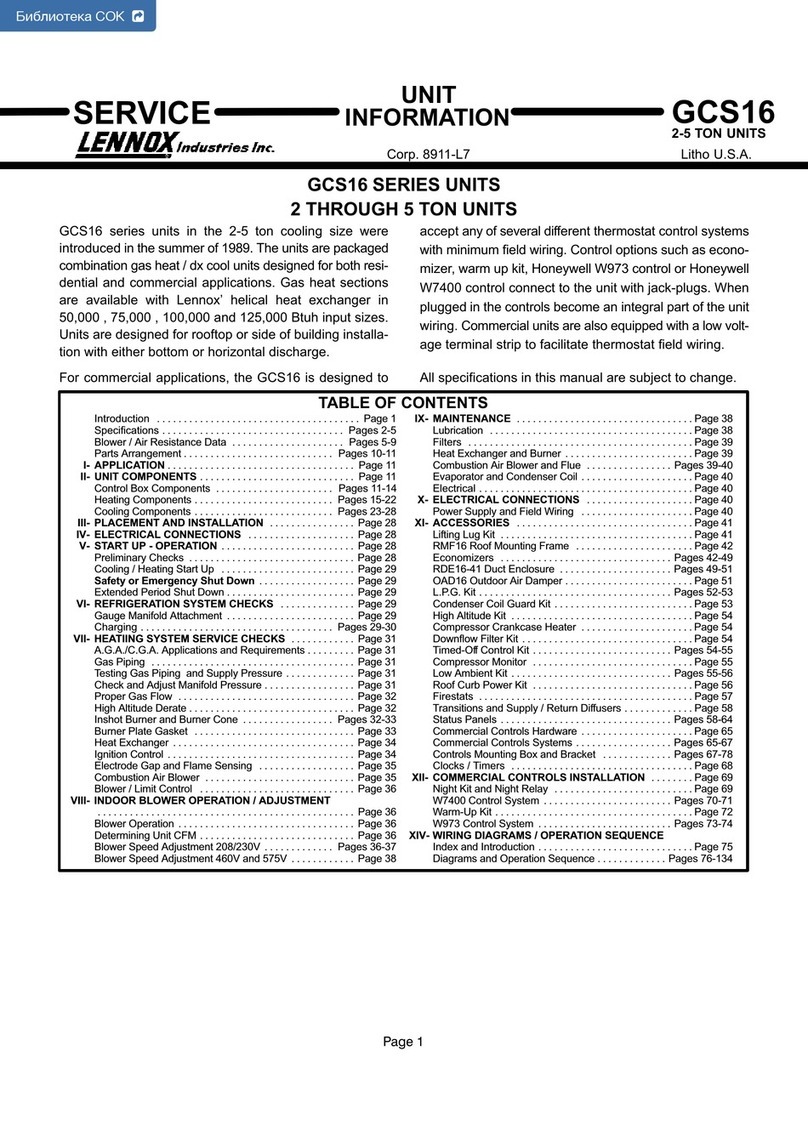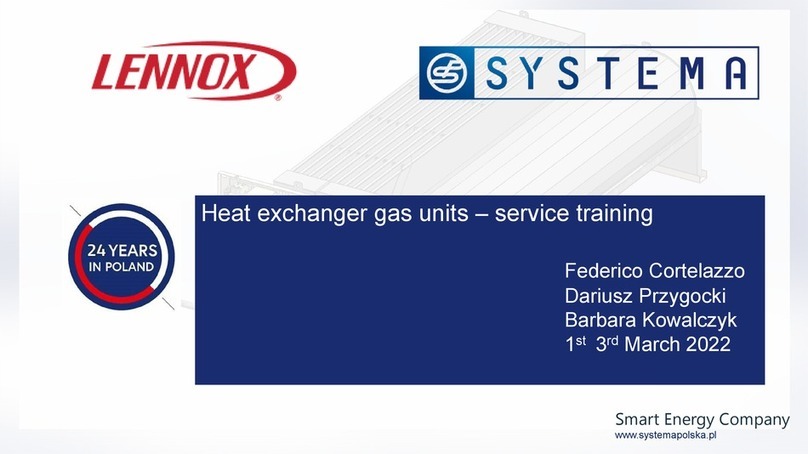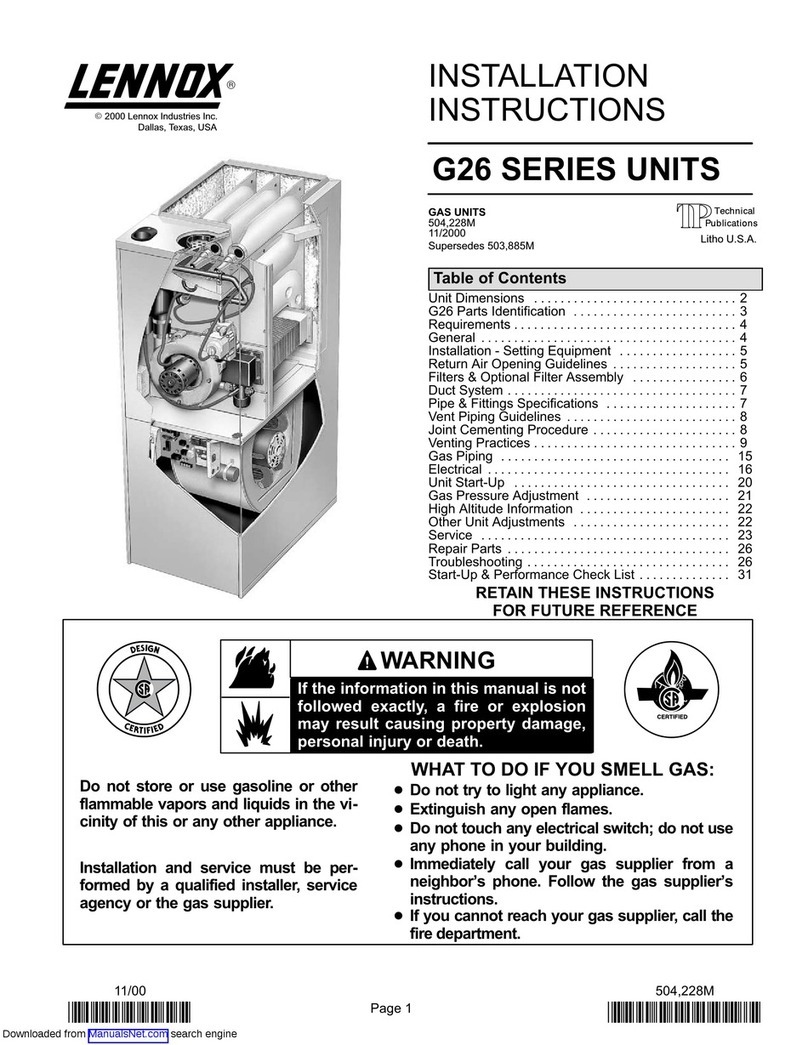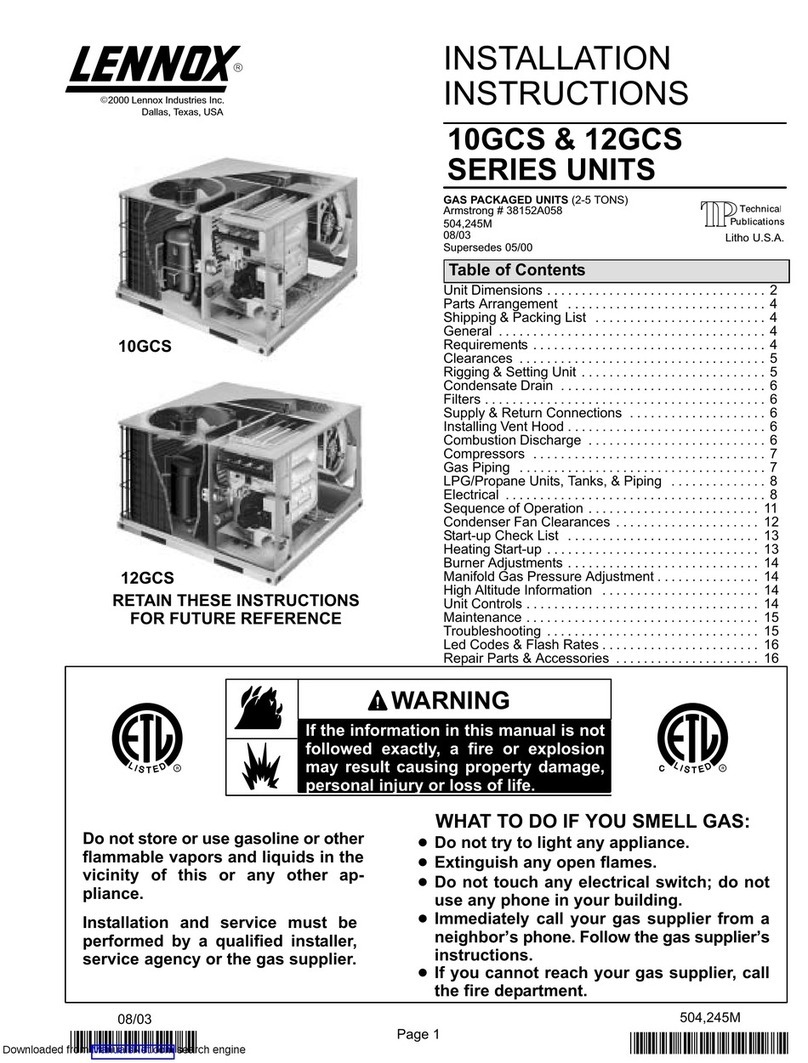
ELECTRONICALLY CONTROLLED
MOTOR
ICM1
ICM2
Page 1 1998 Lennox Industries Inc.
Litho U.S.A.
Corp. 9815−L9
G21/GSR21
Service Literature Revised 10−2001
G21/GSR21 SERIES UNITS
G21 and GSR21 units are condensing furnaces utilizing
the pulse combustion process. Initially, combustion
takes place in an enclosed chamber. Then, as combus
tion products pass through the heat exchanger system
into a coil, the latent heat of combustion is extracted and
water is condensed from the exhaust gas.
The unit uses a redundant gas valve to assure safety
shutoff as required by A.G.A. The units are manufac
tured for natural gas application. L.P. kits for A.G.A. /
C.G.A. units are available for field changeover.
An electronic direct spark ignition control initiates com
bustion. The ignition control serves four functions: pre
purge, ignition, flame sensing and postpurge. Controls
reset in the event of nuisance lockout. The control also
verifies loss of combustion during a cycle, closing the
gas valve. A differential pressure switch shuts down the
unit immediately if there are obstructions in the exhaust
outlet or air intake.
A purge blower clears the combustion chamber before and af
ter each heating cycle to ensure proper air mixture for startup.
All units feature direct drive multispeed blower motors.
V" series units feature an electronically controlled blower
motor (ICM1 or ICM2) controlled by a VSP control (VSP1 or
VSP2−1). The VSP controls blower CFM using either a
PWM (pulse width modulation) signal or fixed 24 VAC or
VDC signal.
These signals are gener
ated by optional controls
such as the Harmony zone
control system, Efficiency
Plus Humidity Control
(CCB1) or a thermostat. A
PWM signal is generated by
the Harmony zone control
system. A fixed DC signal is
generated by the Efficiency
Plus Humidity Control
(CCB1) and a 24 VAC signal
is generated by a thermo
stat.
The Harmony zone control system produces a PWM signal
to regulate blower CFM. The CCB1 varies indoor blower
speed in response to indoor humidity demand. The CCB1
produces a DC signal.
When a twospeed condensing unit is used with the Harmony
zone control system or CCB1, compressor speed as well as
indoor blower CFM are controlled more accurately than with
a conventional two stage thermostat.
All specifications in this manual are subject to change.
PULSE COMBUSTION PROCESS
EXHAUST
BACK PRESSURE IGNITION
COMBUSTION
AIR
GAS
OPEN CLOSED
COMBUSTION
CHAMBER
TAILPIPE
SPARK
1 − Gas and air enter and mix in combustion
chamber
2 − To start the cycle a spark is used to ignite the
gas and air mixture (this is one "pulse").
3 − Positive pressure from combustion closes
flapper valves and forces exhaust gases down
the tailpipe.
4 − Exhaust gases leaving chamber create a
negative pressure. This opens the flapper valve
drawing in gas and air.
5 − At the same instant, part of the pulse is
reflected back from the tailpipe causing the
new gas and air mixture to ignite. No spark is
needed. (this is anotherpulse").
6 − Steps 4 and 5 repeat 60 to 70 times per second
forming consecutive pulses" of 1/4 to 1/2
Btuh each.
7 − Latent heat is removed from combustion
products and condensate (water) is formed in
the condensate coil.
7
4
5
3
1
432
SENSOR
